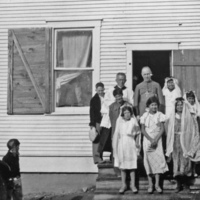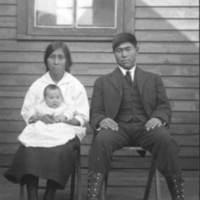Browse Exhibits (2 total)
Interactions between Missionaries and Children of the Columbia Plateau Region

Interactions between the Jesuit Priests and the Native American Tribes of the Columbia Plateau region were dynamic and complex interactions. The purpose of this exhibit is to begin to shed light on some of the specific missions built by the Jesuit Priests, as well as to begin to understand the methods of conversion and evangalizing of the Native peoples of this region. This exhibit consists of primary sources, primarily photographs, taken by Jesuit priests at these missions, depicting Native children and adults throughout the conversion process.
Many priests focused on the Native children in terms of teaching and evanglizing, as the children were more succesible to learing new ways of life, and with the goal that these children would then live a Catholic life, and be able to pass on these teachings to future generations. By starting with the children, the Jesuits sought to evangelize future generations of Native peoples.
The conversion of these children consisted of both cultural and religious changes. The cultural aspect of change consisted of Western attire and cutting of their hair, as well as teaching English. In terms of religious conversion, glass lantern slides were commonly used to visually teach both children and adults the teachings of Catholisism. There is lots of evidence of First Communions, particularly at the Sacred Heart Mission, which is evidence of the conversion of many Native children.
Children as Catalyst of Conversion

When the Jesuits came to King Island in the early 1900s, they largly focused on the children as an entry point for westernizing and converting the entire community to Catholocism.
The photographs in this exhibit and much of the background research that accompanies them come the archives of the the Oregon Province of Jesuits. This exhibit also drew from the writings of Paul Tiulana, a King Islander born in 1921 on the island who wrote in the 1980s about his community's heritage. Thus, with the exception of Tiulana's writings, much of the information about and all of the images of the King Islanders presented here come to us through a Jesuit perspective. The diary of LaFortune, S.J. was referenced, in addition to newspaper clippings from Washington State from the same time period.
This is a collection of photographs taken by Jesuit Joseph M. Treca in 1916. The photographs provide a snapshot of the King Islander community while they were in Nome.
